Certified ATEX pressure transmitters for Zone 0, 1, and 2 environments. Essential for preventing ignition in refineries, chemical plants, and gas pipelines.
ATEX approved pressure transmitters are critical safety components designed for reliable operation in potentially explosive atmospheres where flammable gases, mists, or dusts are present. This range of instrumentation incorporates specific protection methods, such as intrinsic safety (Ex ia) and flameproof enclosures (Ex d), ensuring that they cannot become an ignition source in hazardous zones commonly found in petrochemical, natural gas, chemical processing, and other demanding industrial environments. Understanding the nuances of ATEX certification and the specific application requirements is key to selecting the correct transmitter for ensuring operational safety and process integrity.
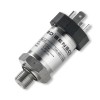 DMK457 Marine Approved Pressure Transmitter - Marine approved pressure transmitter with 4-20mA current loop output for shipbuilding with optional CuNiFe housing for sea-water compatibility
DMK457 Marine Approved Pressure Transmitter - Marine approved pressure transmitter with 4-20mA current loop output for shipbuilding with optional CuNiFe housing for sea-water compatibility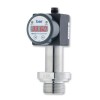 DS200P Sanitary Low Range Pressure Gauge, Switch and Sensor - All in one electronic switch, gauge and sensor designed specifically for use in the food, drink and biomedical industry for measuring process pressures.
DS200P Sanitary Low Range Pressure Gauge, Switch and Sensor - All in one electronic switch, gauge and sensor designed specifically for use in the food, drink and biomedical industry for measuring process pressures.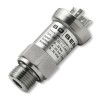 DMP331 Precision Pressure Transmitter - Stainless steel pressure transmitter with ranges from 100mbar up to 40 bar gauge or absolute. Special options for ATEX , SIL2 and compound ranges.
DMP331 Precision Pressure Transmitter - Stainless steel pressure transmitter with ranges from 100mbar up to 40 bar gauge or absolute. Special options for ATEX , SIL2 and compound ranges.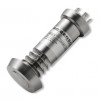 DMP331P Hygienic Flush Pressure Transmitter - Sanitary pressure sensor wth exposed diaphragm with no crevices for high temperatures up to 300 Degrees Celsius in ranges from 100mb up to 40 bar gauge or absolute
DMP331P Hygienic Flush Pressure Transmitter - Sanitary pressure sensor wth exposed diaphragm with no crevices for high temperatures up to 300 Degrees Celsius in ranges from 100mb up to 40 bar gauge or absolute DPT200 High One Side Overload Differential Pressure Sensor - DP transmitter for measuring pressure difference between two pressure points which can tolerate up a very high overload pressure independently on either the positive or negative side port or both together at the same time.
DPT200 High One Side Overload Differential Pressure Sensor - DP transmitter for measuring pressure difference between two pressure points which can tolerate up a very high overload pressure independently on either the positive or negative side port or both together at the same time. DMP 335 All Welded Stainless Steel Diaphragm Pressure Sensor - All welded stainless steel diaphragm pressure sensor for mobile hydraulics, refrigeration or oxygen applications. This pressure sensor is available in the ranges from 6 bar up to 600 bar gauge with a 4-20mA or 0-10Vdc output signal.
DMP 335 All Welded Stainless Steel Diaphragm Pressure Sensor - All welded stainless steel diaphragm pressure sensor for mobile hydraulics, refrigeration or oxygen applications. This pressure sensor is available in the ranges from 6 bar up to 600 bar gauge with a 4-20mA or 0-10Vdc output signal.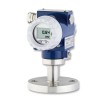 XMPi Process Plant Gauge and Absolute Pressure Transmitter - Process transmitter for measuring vacuum, steam, food, pharmaceutical, oil, gas and other pressure readings necessary for the monitoring and control of bulk production processes.
XMPi Process Plant Gauge and Absolute Pressure Transmitter - Process transmitter for measuring vacuum, steam, food, pharmaceutical, oil, gas and other pressure readings necessary for the monitoring and control of bulk production processes.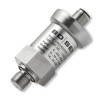 DMP343 Low Range Pneumatic Pressure Sensor - DMP343 pneumatic pressure sensor for measuring very low range pressures on pneumatic control systems, heating, ventilation and air conditioning systems (HVAC) .
DMP343 Low Range Pneumatic Pressure Sensor - DMP343 pneumatic pressure sensor for measuring very low range pressures on pneumatic control systems, heating, ventilation and air conditioning systems (HVAC) .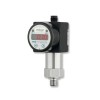 DS210 Combined Low Pressure Switch, Indicator and Sensor - Low range three in one pressure switch, pressure indicator and pressure sensor for use on pneumatics and HVAC applications.
DS210 Combined Low Pressure Switch, Indicator and Sensor - Low range three in one pressure switch, pressure indicator and pressure sensor for use on pneumatics and HVAC applications.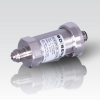 DMP 336 Hydrogen (H2) Gas Compatible Pressure Transmitter - All stainless steel 316L welded wetted parts pressure transmitter for measuring hydrogen gas
DMP 336 Hydrogen (H2) Gas Compatible Pressure Transmitter - All stainless steel 316L welded wetted parts pressure transmitter for measuring hydrogen gas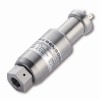 DMP304 Ultra High Range Hydraulic Pressure Transducer - Current output pressure transducer for measurement ranges from 0 to 2000 (30000 psi) range up to a maximum range of 6000 bar (90000 psi).
DMP304 Ultra High Range Hydraulic Pressure Transducer - Current output pressure transducer for measurement ranges from 0 to 2000 (30000 psi) range up to a maximum range of 6000 bar (90000 psi).  DMP331i High Accuracy Pressure Transmitter - High precision pressure transmitter with an accuracy of 0.1%FS BSL NLHR and digitally adjustable pressure ranges from 400mb up to 40 bar gauge & absolute.
DMP331i High Accuracy Pressure Transmitter - High precision pressure transmitter with an accuracy of 0.1%FS BSL NLHR and digitally adjustable pressure ranges from 400mb up to 40 bar gauge & absolute.
- ATEX approved negative 10 mbar vacuum pressure transmitter
- Dust ATEX approved 2 psi pressure transmitter
- Barometric 550 to 1150 hPa abs high resolution pressure transmitter
- Powder filter blockage monitoring pressure transmitter
- Waste toner dust extraction vacuum transmitter with 1000 mbar range
Find out more about ATEX Approved Pressure Transmitters to determine which product options and capabilities will best meet your application requirements.
ATEX approved pressure transmitters are specifically engineered for deployment in environments where the presence of flammable gases, vapours, or dusts poses a significant explosion risk. These devices are indispensable in sectors such as petrochemical refining, natural gas processing and distribution networks, chemical manufacturing facilities, and offshore extraction platforms. The core design principle behind these transmitters is the integration of specific protection concepts, mandated by ATEX directives, to prevent the electrical energy or thermal energy of the instrument from becoming an ignition source for the surrounding hazardous atmosphere. Selecting the appropriate ATEX certified pressure transmitter involves a careful assessment of the specific hazardous zone classification (e.g., Zone 0, Zone 1, or Zone 2 for gases; Zone 20, Zone 21, or Zone 22 for dusts) and the nature of the flammable substances present.
The certification accompanying an ATEX pressure transmitter, such as those marked with Ex ia (intrinsic safety, suitable for Zone 0, 1, 2), Ex ib (intrinsic safety, suitable for Zone 1, 2), Ex ic (intrinsic safety, suitable for Zone 2), or Ex d (flameproof enclosure, suitable for Zone 1, 2), provides documented assurance that the device meets stringent safety requirements. For instance, intrinsically safe pressure transmitters limit the electrical and thermal energy to levels below that which could ignite a specific hazardous atmosphere, even under fault conditions. Flameproof (Ex d) designs, on the other hand, ensure that any internal ignition is contained within an enclosure robust enough to withstand the pressure of an internal explosion and prevent its propagation to the external atmosphere. This often involves specialized housings and cable entry glands designed to maintain the integrity of the flameproof path.
Engineers specifying these transmitters must consider not only the ATEX protection method and zone classification but also the process media compatibility, required accuracy, and long-term stability. In applications like monitoring pressures in reactor vessels within a pharmaceutical plant using flammable solvents, or ensuring the integrity of biogas pipelines at a waste treatment facility, the reliability of these transmitters is paramount for operational safety. The materials of construction for wetted parts, such as stainless steel 316L or Hastelloy C276, are critical for resistance to corrosive media, while the choice of diaphragm seals can protect the sensor from aggressive chemicals or particulate-laden flows, thereby maintaining measurement integrity and safety. Furthermore, considerations for installation, including correct earthing and the use of certified cable glands and barriers (for intrinsically safe circuits), are crucial to uphold the ATEX protection.
These specialized pressure transmitters are also frequently employed in hydrogen production and storage facilities, paint manufacturing plants where solvent vapours are prevalent, and in grain silos or flour mills where combustible dust clouds can form. The continuous and accurate measurement of pressure in these environments is vital for process control, leak detection, and overpressure protection, directly contributing to the prevention of catastrophic events. The integration of advanced diagnostic features and robust communication protocols, such as HART, alongside the ATEX certification, allows for enhanced monitoring and predictive maintenance, further bolstering safety and efficiency in these demanding industrial settings.
